Basant Panchami:” Goodbye Winters, and Welcome Spring “.
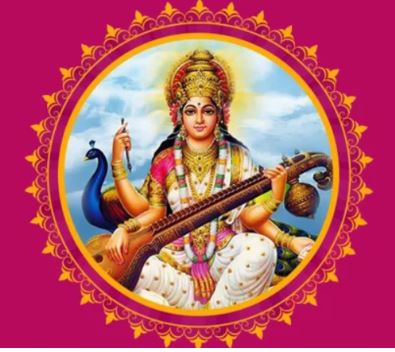

Vasant Panchami also called Basant Panchami marks the beginning of the transition period from winter to spring.
In many parts of India, Maa Saraswati Pooja is also done on Vasant Panchami day.
After Makar Sankranti which generally falls on January 14th, the Sun gradually starts its northward journey from the tropic of Capricorn as winter gradually fades away, leading to warmer days. A pleasant change in season heralds the arrival of spring, as the subcontinent heaves a sigh of relief from the severe winter. After this transition period of around 30 days, starting from Vasant Panchami, spring comes into full bloom around the time of the colorful festival, Holi.
As per the Hindu calendar, Vasant Panchami falls on the fifth day of the bright lunar fortnight (Shukla Paksha) of the Hindu month of Magha in the Indian lunisolar calendar. This corresponds to January and February in the Gregorian calendar.
Since ancient times, Vasant Panchami is also known as the “festival of the river Saraswati“.
The Saraswati River was an ancient river in northwest India that dried up over time. In ancient days, with the advent of spring, the Himalayan glaciers would melt, increasing the flow of the river Saraswati. The mustard plants that grew on the banks of the river used to go into full bloom, with the yellow color of mustard flowers decorating the banks of the river for many miles, making for a wonderful sight.
It is interesting to note that the color yellow represents knowledge in the Indian tradition. It is the color of spring.
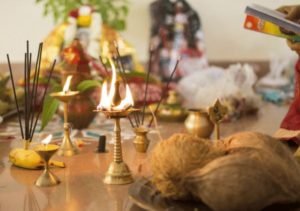
So, in many parts of India, this festival is known as Saraswati puja, a day to propitiate Goddess Saraswati.
Saraswati pujas are conducted in houses while the Saraswati temples are decorated and thronged by devotees.
In south India, it is celebrated as Sri Panchami, Sri being one of the names of Goddess Lakshmi.
Vasant Panchami is also the day when Goddess Parvati sent Kama Deva to disturb Lord Shiva’s penance.
The festival of Vasant Panchami is thus associated with all three goddesses in the “Hindu Trinity“.
In other words, it is a day that celebrates knowledge (Saraswati), prosperity (Lakshmi), and creative energy (Parvati).
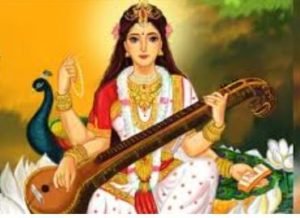
As per Hindu scriptures, Lord Shiva was once in deep penance. Tarakasura had attained a boon that only Shiva’s son would be able to put an end to his life. He began wreaking havoc all across the world emboldened by the fact that Shiva had become an ascetic immersed in meditation for a long period and it was unlikely that he would ever marry again after the self-immolation of Sati (Shiva’s first wife).
Meanwhile, Sati had reincarnated as Parvati. Parvati had undertaken a severe penance to attain Lord Shiva. However, Shiva was unmoved. Parvati then sent Kama Deva (God of love) to rouse Shiva from his meditation. It was on Vasant Panchami day that Kama Deva approached Shiva and created an illusionary spring in Kailash to attract the Lord and bring him out of his penance. Shiva does eventually awaken but reduces Kama Deva to ashes. He then accepted Parvati as his wife. The son born to Shiva and Parvati; Lord Kartikeya went on to annihilate Tarakasura.
In ancient times, Vasant Panchami was the beginning of a month-long festival called “Vasant Utsav” which culminated with the color festival, Holi., Vasant Panchami which generally comes in January end or early February is considered apt for marriage. As per the scriptures, even the gods got married during this month. Lord Shiva and Maa Parvati had their wedding during this period.
On Vasant Panchami, Goddess Saraswati is draped in a yellow Sari, making her association with the festival and the river complete. People also dress in yellow and share yellow-colored food items on this day. And, Vasant Panchami which is an occasion to worship Goddess Saraswati is a day to celebrate knowledge as in some traditions, children are also initiated into education on this day.
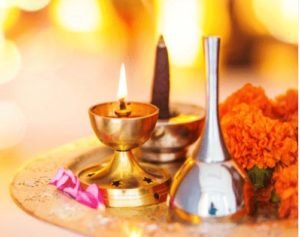
Vasant Panchami is celebrated in different ways in different regions of India.
Vasant Panchami is of great significance in India, the land of Sages and Rishis. It is celebrated in different ways in a distinct part of India.
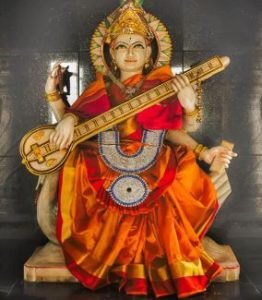 Maharashtra: – In Maharashtra, Vasant Panchami is very important especially for married couples as they visit temples wearing yellow clothes.
Maharashtra: – In Maharashtra, Vasant Panchami is very important especially for married couples as they visit temples wearing yellow clothes.The color of Basant is yellow which symbolizes peace, prosperity, light, energy, and optimism. This is the reason that people wear yellow clothes and make traditional delicacies in yellow hues. Food also varies in many states of India.
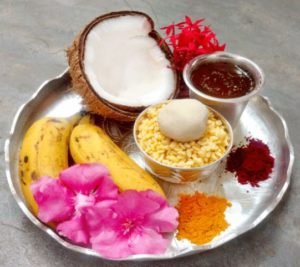
In Bengal, on Vasant Panchami God is offered Bondi and laddoos. Sweet rice with saffron and dry fruits is made in almost every house on this occasion. Mango wood, shriphal (coconut), and Ganga water are also offered, particularly by Bengalis.
In Punjab, Traditional Maaki ki Roti and Sarso Ka Saag are savored.
In Bihar, people celebrate by offering delicacies like Kheer, Malpua, and Boondi.
Like all festivals, it is marked by many traditional delicacies, like khichuri, mixed vegetables, kesar halwa, Kesari baat, Payesh, begun bhardha, Sandesh, and raj bhog are served as a bhog on this special day.
This day is celebrated by savoring Dahi Chura along with Gur and banana.
Wishing you all a Prosperous, Blessed, and Joyful Vasant Panchami.
DISCLAIMER: The author is solely responsible for the views expressed in this article. The author carries the responsibility for citing and/or licensing of images utilized within the text.
